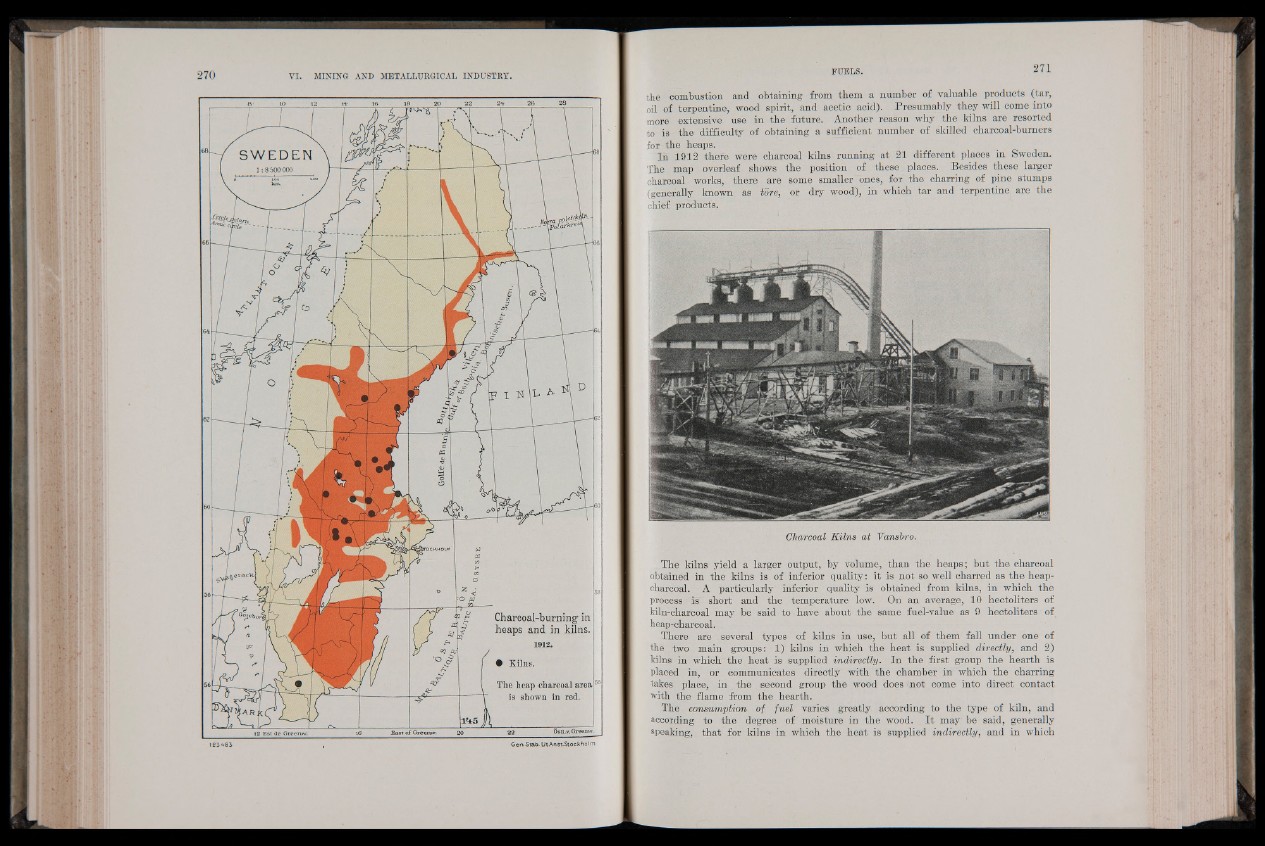
the combustion and obtaining from them a number of valuable products (tar,
oil of terpentine, wood spirit, and acetic acid). Presumably they will come into
more extensive use in the future. Another reason why the kilns are resorted
to is the difficulty of obtaining a sufficient number of skilled charcoal-burners
for the heaps.
In 1912 there were charcoal kilns running at 21 different places in Sweden.
The map overleaf shows the position of these places. Besides these larger
charcoal works, there. are some smaller ones, for the charring of pine stumps
(generally known as fore, or dry wood), in which tar and terpentine, are the
chief products,
Charcoal Kilns at Vansbro.
The kilns yield a larger output, by volume, than the heaps; but the charcoal
obtained in the kilns is of inferior quality: it is not so well charred as the heap-
charcoal. A particularly inferior quality is obtained from kilns, in which the
process is" short and the temperature low. On an average, 10 hectoliters of
kiln-chareoal may be said to have about the same fuel-value as 9 hectoliters of
heap-charcoal.
There are several types of kilns in use, but all of them fall under one of
the two main groups: 1) kilns in which the heat is supplied directly, and 2)
kilns in which the heat is supplied indirectly. In the first group the hearth is
placed in, or communicates directly with the chamber in which the charring
takes place, in the second group the wood does »not come into direct contact
with the flame from the hearth.
The consumption of fuel varies greatly according to the type of kiln, and
according to the degree of moisture in the wood. It may be said, generally
speaking, that for kilns in which the heat is supplied indirectly, and in which